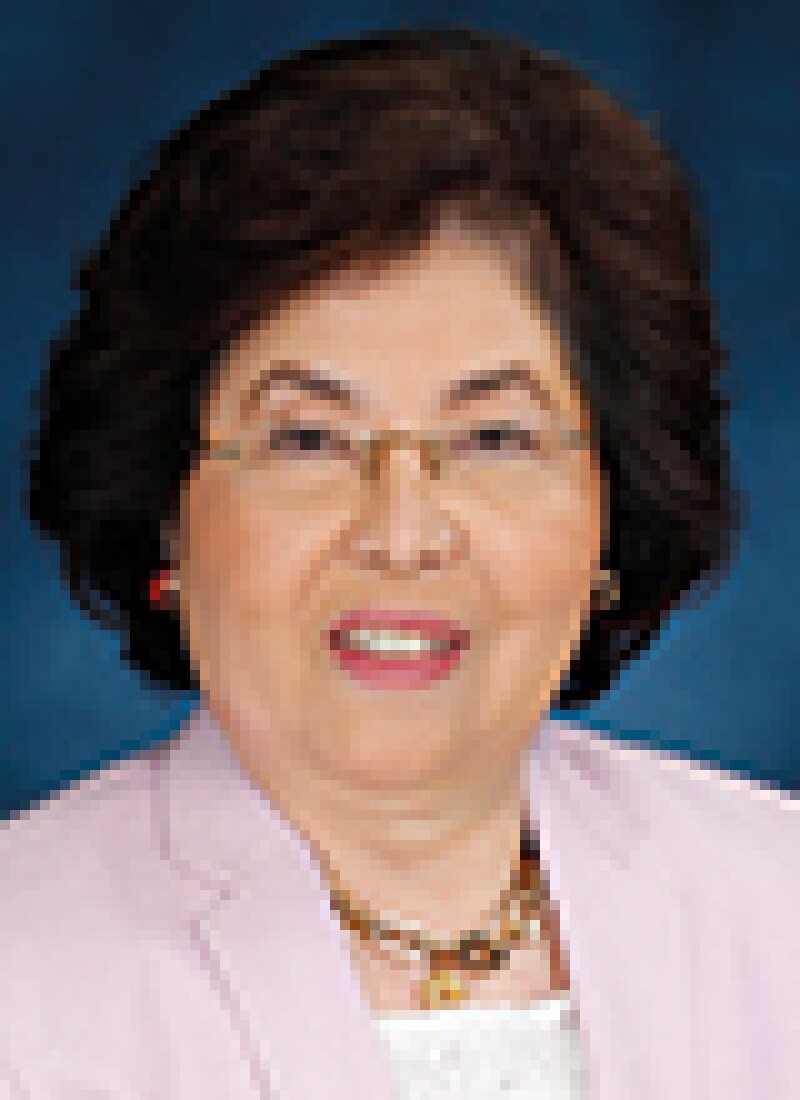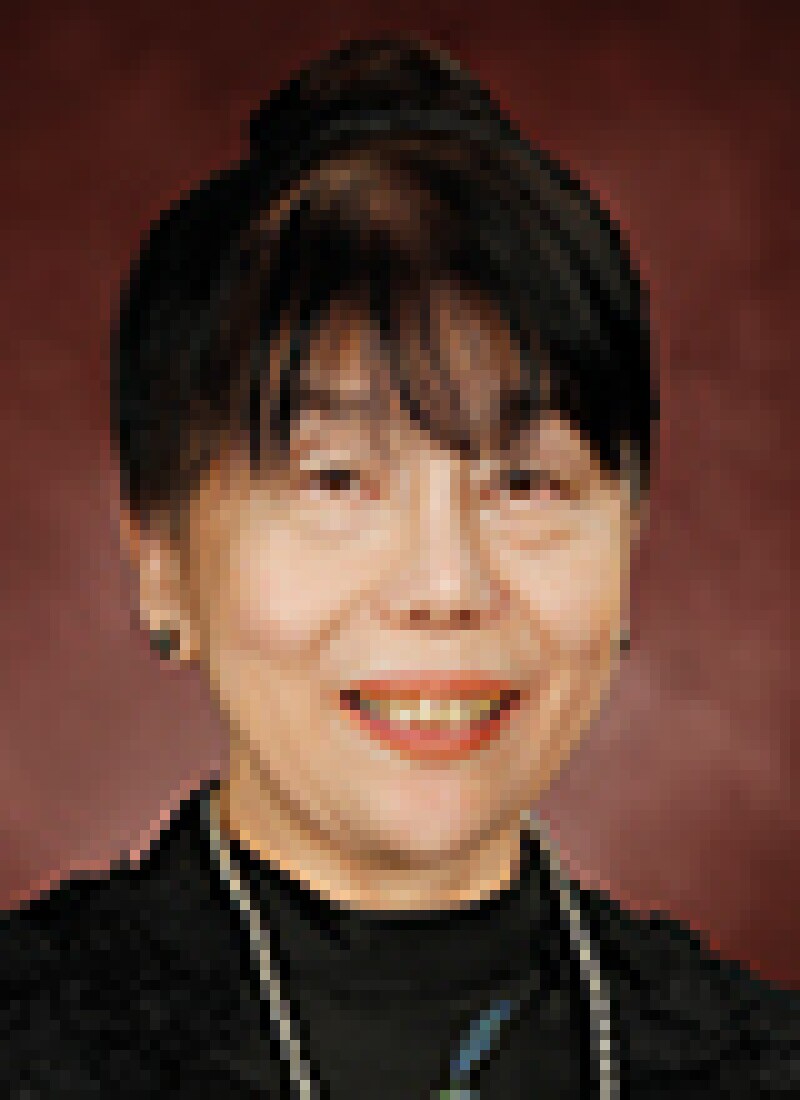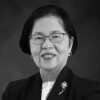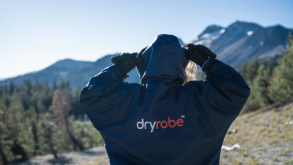What is the procedure for acquiring a patent?
A non-resident applicant must appoint a Philippine lawyer or patent agent to prosecute his patent application before the Intellectual Property Office of the Philippines (IPOPHL). To obtain a filing date, the patent application must contain: (a) an indication that a Philippine patent is sought; (b) information on the applicant; (c) description of the invention and one or more claims; (d) drawings, if applicable; (e) payment of the prescribed fees; (f) priority claims, if applicable. An application that has complied with the formal requirements shall be classified, and a search shall be conducted to determine the prior art. The application, with the search, are published in the IPOPHL Gazette after 18 months from the filing date or the priority date.
Within six months from the publication, the applicant must request substantive examination with fee, otherwise the application is deemed to be withdrawn. Within the same six months, any person may present observations in writing regarding the patentability of the invention, for example, on novelty, inventive step, industrial applicability. These observations shall be considered in the examination of the patent application. If the examiner finds no reason to refuse the application, or if the notice of reason for refusal is satisfactorily complied with by the applicant, the examiner issues a decision to grant the patent registration. Otherwise, the examiner refuses the application. There is no opposition procedure, only cancellation for patents.
How long are patents valid for?
For national phase applications under the PCT, the term is 20 years from the international filing date, with the first annual fee due at the end of the fourth year from the international publication date, regardless of the language of the publication. For direct filings, the term of protection is 20 years, and the first annual fee is due at the end of the fourth year from the publication date, and every year thereafter.
How do you renew patents?
Philippine patent laws cover inventions, utility models and designs. There are no renewals for inventions and utility models, but only for industrial design registrations, which have a term of five years from the filing date, and are renewable only for two consecutive periods of five years each.
Are there any recent court decisions that patent applicants should bear in mind?
There are very few cases which reach the Supreme Court. However, the following cases are worth keeping in mind:
Doctrine of equivalents
This doctrine provides that an infringement also takes place when a device appropriates a prior invention by incorporating its innovative concept and, although with some modification and change, performs substantially the same function in substantially the same way to achieve substantially the same result. In the case of Smith Kline Beckman Corp v CA, Tryco Pharma Corp [G.R. No. 126627, August 14 2003], the Supreme Court emphasised that in determining patent infringement, the doctrine of equivalents requires satisfaction of the function-means-and-result test, the patentee having the burden to show that all three components of such equivalency test are met. In this case, Smith Kline failed to prove that Tryco's compound Albendazole inheres in the former's patent, or that the meaning of the claims of the patent embrace the compound.
Need for vigilance of patent agent and applicant
In the case of E.I Dupont de Nemours and Co. v Dir. Emma Francisco (IPOPHL), Terapharma, et al, (G.R. No. 174379, August 31 2016), Dupont, through its Philippine agent, filed on July 10 1987, its application no. 35526 for Losartan, an invention related to the treatment of hypertension and congestive heart failure, being sold under the brand name Cozaar and Hyzaar. For failure to respond to an office action and revive it within the required period, the application was deemed forfeited by the IPOPHL. Dupont, through its new agent, filed a petition for revival on May 30 2002, or 13 years from the date of abandonment, stating that its former agent had died and they had only learnt about the death in 1996. The IPOPHL rejected the petition, stating that it had been filed out of time, and held the agent and applicant neglectful. The Supreme Court affirmed IPOPHL's conclusion on the inexcusable negligence, and further ruled that public interest would be prejudiced, if intervener Terapharma, which developed its own Losartan products banking on the IPOPHL's records of the abandonment of Dupont's patent, and sold its own version at a much lower price, would not be allowed to compete in the market.
How can you establish patent infringement and how is infringement dealt with?
Only the patentee or his successors in interest may file a civil or administrative action for infringement to recover damages and secure an injunction. Patent infringement is the making, using, offering for sale, selling, or importing of a patented product or a product obtained directly or indirectly from a patented process, or the use of a patented process without the patentee's consent. Anyone who actively induces the infringement of a patent or provides the infringer with a component of a patented product or of a product produced because of a patented process, knowing it to be especially adopted for infringing the patented invention and not suitable for substantial non-infringing use shall be liable as a contributory infringer and be jointly and severally liable with the infringer.
No damages are recoverable for acts of infringement committed more than four years before the institution of the action for infringement. The court may order the destruction of the infringing product including the materials and implements used in the infringement without compensation. Criminal action is available for a repeat infringement, and the penalty is a fine and imprisonment.
Which pieces of legislation govern patent law in the Philippines?
The Intellectual Property Code of the Philippines (Republic Act 8293, as amended), and its Implementing Rules and Regulations;
Rules of Procedures for IP Cases A.M. No. 10-3-10-SC, November 8 2011;
Rules on Search and Seizure in Civil Actions, A.M. No. 02-1-06 SC, February 15 2002;
Philippine Rules on PCT. On May 20 2019, the IPOPHL became an international searching authority (ISA) and international preliminary examining authority (IPEA).
Which inventions can be covered by patents?
A patentable invention may be or may relate to: (a) a product, such as a machine, a device, an article of manufacture, a composition of matter, a microorganism; (b) a process, such as a method of use, a method of manufacturing, a non-biological process, a microbiological process; (c) computer-related inventions; and (d) an improvement of any of the foregoing.
How do you invalidate a patent? What are the grounds for invalidation?
Any person may file a petition before the Bureau of Legal Affairs (BLA) of the IPOPHL, which has exclusive jurisdiction over the cancellation of a patent or any claim thereof, or parts of the claim, on any of the following grounds: (a) that what is claimed as the invention is not new or patentable, (b) that the patent does not disclose the invention in a manner sufficiently clear and complete for it to be carried out by any person skilled in the art, and (c) that the patent is contrary to public order or morality. The invalidity of a patent may also be raised as a defence and/or counterclaim in a patent infringement action over which the IPOPHL and the Regional Trial Court (RTC) have concurrent jurisdiction.
What are the requirements for a patent?
For an invention patent, it must be a technical solution to a problem in any field of human activity which is new, involves an inventive step and is industrially applicable. For a utility model, there is no requirement for inventive step, and the IPOPHL has adopted an expeditious registration process without substantive examination. The same process applies to industrial designs, and to be registrable, they must be new and can serve as a pattern for an industrial product or handicraft.
Which inventions cannot be patented?
The following cannot be patented: (a) discoveries, scientific theories and mathematical methods, (b) schemes, rules and methods for performing mental acts, playing games or doing business, and computer programs, (c) methods for treatment of the human or animal body by surgery or therapy, and diagnostic methods practised on the human or animal body, (d) plant varieties or animal breeds or essentially biological processes for the production of plants or animals, (e) aesthetic creations, (f) anything which is contrary to public order or morality.
What are the different stages in patent litigation?
For civil actions (Regional Trial Court) and administrative actions (Bureau of Legal Affairs/IPOPHL), the stages are similar and the stages are: (a) filing of the complaint; (b) filing of the answer (motion to dismiss is prohibited); (c) referral to mediation or alternative dispute resolution; (d) pre-trial; and (e) trial. The provisional remedies of attachment and preliminary injunction are available. Also, an application for a writ of search and provisional seizure to prevent infringement and preserve relevant evidence is available for civil actions. The stages of appeal for the RTC decision are the Court of Appeals and then the Supreme Court. For the BLA, the decision of the adjudication officer can be appealed by either party to the BLA director, then to the Office of the Director General, then to the Court of Appeals and finally to the Supreme Court.
Trademarks
Are trademarks in Japanese characters registrable in the Philippines?
Yes. The IP Code defines trademark as any visible sign capable of distinguishing the goods or services of an enterprise and will include a stamped or marked container of goods. The applicant, will be required to provide the transliteration or translation to English of the characters, or any foreign language for that matter.
What are the requirements for filing a trademark application?
To file a trademark application, an applicant who is not domiciled in the Philippines should appoint an attorney or resident agent. The information and documentary requirements are as follows: (a) signed power of attorney; (b) name of applicant as well as country of incorporation and principal place of business, if body corporate; (c) enumeration of goods and/or services; (d) illustration of the mark in jpg format; (e) claim of colour, if any; (f) state if three-dimensional; (g) if with claim of priority, date of filing the priority application and the country or IP office where the application was filed.
What is the duration of a trademark registration?
The registration shall remain in force for 10 years, renewable every 10 years. To maintain the trademark registration the requisite Declaration of Actual Use (DAU) must be filed within three years from filing, on the fifth anniversary from date of registration, and on the renewal. For an international registration under the Madrid system, the third year DAU must be filed within three years from the international registration date and the fifth year DAU, during the fifth year from the date of issuance of Statement of Grant of Protection.
What proofs of use are acceptable for the DAU?
The following are acceptable proofs of use: labels, downloaded pages from the applicant's website, photographs (including digital photographs printed on ordinary paper) of goods bearing the marks, brochures or advertising materials showing the trademark on goods or services as sold, receipts or invoices showing the mark on goods sold or services rendered in the Philippines, copies of contracts for services showing the use of the mark.
How are trademark rights enforced?
For oppositions and cancellations, any party that will be damaged by the registration of a trademark may file an opposition or cancellation action before the IPOPHL. Prior registration or application in the Philippines is not a requirement to have standing. Actions for infringement and unfair competition may be administrative before the IPOPHL or civil or criminal before the RTC. The stages of the action are the same as those for patents.
特許および商標について
作成者:Editha R. Hechanova、Brenda P. Rivera、 Chrissie Ann L. Barredo
1. 特許取得に関する手続きについて
出願人が国外居住者である場合、Intellectual Property Office of the Philippines (IPOPHL: フィリピン知的財産庁)に対し特許出願の審査手続きを行うため、フィリピンの弁護士あるいは弁理士を任命しなければならない。出願を受理してもらうためには、特許出願書類に以下の(a)~(f)が含まれていることが必須である。
(a) フィリピンの特許が必要であることを示すもの
(b) 出願人に関する情報
(c) 発明の説明および1つ以上のクレーム
(d) 図面(該当する場合)
(e) 所定の手数料の納付
(f) 優先権の主張(該当する場合)
正式な要件に準拠している出願書類は分類され、先行技術に対する調査が行われる。調査が行われた出願書類は、出願日あるいは優先日から18カ月後にIPOPHL Gazette (IPOPHLの公報)で公示される。
前記の公示から6カ月以内に、出願人は、有料で実体審査請求をしなければならず、さもなければ出願を辞退したものとみなされる。同じ6カ月以内に、何人も、新規性、進歩性、産業上の利用可能性に関する問題などの発明の特許性についての意見書を提出することができ、その意見は特許出願書類の審査を行う際に考慮される。審査官は、出願を拒絶するいかなる理由もないと判断した場合、あるいは出願人が拒絶理由通知に準拠する回答をしている場合、特許登録を認める決定を下す。そうでない場合、審査官は出願を拒絶する。異議申立の手続きはなく、あるのは、特許の取消だけである。
2. 特許の有効期間について
PCTに基づく国内段階出願に関しては、有効期間を国際出願日から20年、初回の年金の納付期限を国際公示日から4年目の末日とし、公示の言語は問わないものとしている。直接出願に関しては、保護期間を20年、初回の年金の納付期限を公示日から4年目の末日とし、その後は毎年納付するものとしている。
3. 特許の更新について
フィリピンの特許法は、発明、実用新案および意匠をその規制の対象としている。 更新は、発明や実用新案に対してはないが、工業意匠登録に対してはあり、有効期間が出願から5年間で、各5年の期間が2期連続している場合にのみ更新することが可能である。
4. 近年の裁判所の決定事項で、特許出願人が認識しておくべきことについて
最高裁判所に持ち込まれる訴訟はほとんどないが、以下の判例は、心に留めて置いておいたほうが良いだろう。
(a) 均等論
本原理では、装置が、先願の発明の画期的な概念を取り入れることでそれを利用し、幾分修正や変更があるにしても、ほぼ同じ方法で、ほぼ同じ機能を果たし、その結果、ほぼ同じ結果を達成することを侵害行為と定めている。Smith Kline Beckman Corp vs.CA, Tryco Pharma Corp (G.R. No. 126627,2003年8月14日) の訴訟において、最高裁は、特許侵害の判断を下すにあたり、機能-手段-結果という基準を満たすことが均等論適用の要件であり、この均等論の基準の3要素が満たされていることを立証する責任は特許権所有者にある旨を明言した。本件では、Smith Klineは、Trycoのアルベンダゾール化合物がSmith Klienの特許に属するということ、あるいは当該化合物が、当該特許のクレームの解釈に含まれるということを立証しなかった。
(b) 弁理士への警戒の必要性と出願人
E.I Dupont de Nemours and Co. vs. Dir. Emma Francisco (IPOPHL), Terapharma, et al,( G.R. No. 174379, 2016年8月31日)の訴訟において、Dupontは、同社のフィリピンの弁理士を通じ、1987年7月10日、高血圧および鬱血性心不全の治療に関係する発明であるロサルタンに対し出願(第35526号)、Cozaar及びHyzaarという商品名で販売。 拒絶理由通知に応答せず、必要な期間内に復活させなかったことで、出願の権利放棄であるとIPOPHLに判断された。Dupontは、以前の弁理士が死亡し、そのことを1996年になって初めて知ったと言い、同社の新たな弁理士を通じ、2002年5月30日、出願放棄から13年後に出願を復活させる申し立てを行った。IPOPHLは、既に期限切れでの申し立てという理由からそれを棄却、当該弁理士および出願者を放置した。最高裁判所は、弁解の余地のない怠慢というIPOPHLの決定を支持し、またIPOPHLが保管するDuponの特許放棄の記録を頼りに独自にロサルタン製品を開発し、より低価格で販売してきた参加人のTerapharmaが市場で競合することを認められなければ、公共の利益が損なわれるであろうとさらに踏み込んだ判決を下した。
5. 特許侵害の立証および対応方法について
特許権所有者あるいは利害関係のある相続人のみが、特許権侵害に対し民事訴訟あるいは行政処分の申請をし、損害賠償を請求し、差し止めを行うことができる。特許侵害とは、特許権所有者の許可を得ずに、特許を受けた製品あるいは特許を受けた方法を直接的あるいは間接的に使用して獲得した製品を製造、使用、販売用に提供、販売、あるいは輸入すること、または特許を受けた方法を使用することである。特許の侵害を積極的に誘発するか、あるいは特許発明の侵害のために特に使われるものであり、かつ、実質的に侵害しない使用には適さないものであることを知りながら特許を受けた製品、または特許を受けた方法により製造される製品の部品を侵害者に積極的に提供する者は、寄与侵害者として法律上の責任を有し、かつ、侵害者と連帯して、および別個に法律上の責任を有する。侵害訴訟の提起から4年以上前になされた侵害行為については、損害賠償を求めることはできない。裁判所は、特許侵害に使用されている材料および器具を含めた不正製品を補償せずに破棄する命令を下すことができる。繰り返される侵害に対しては、刑事訴訟を起こすことが可能であり、罰金と懲役を科すことができる。
6. 特許法に適用されるフィリピンの法律について
a. フィリピン知的財産法 (第8293号法、その改正を含む)およびその運用規則
b. 知的財産事件手続規則(A.M. No. 10-3-10-SC, 2011年11月8日)
c. 民事訴訟における捜査押収に関する規則(A.M. No. 02-1-06 SC, 2002年2月15日)
d. フィリピンにおける国際特許出願(PCT)に関する規則 *2019年5月20日、IPOPHLは、国際調査機関(ISA)および国際予備審査機関(IPEA)となった。
7. 特許の対象となる発明について
特許性のある発明は、以下(a)~(d)の要件を満たすか、または関連するものである。
(a) 機械、装置、製造物、組成物、微生物などの製品
(b) 使用法、製造法、非生物学的方法、微生物学的方法などの方法
(c) コンピューターに関わる発明
(d) 上記いずれかの改善事項
8. 特許取消しの方法および根拠について
何人も、以下(a)~(c)のいずれかの根拠に基づき、特許あるいはその特許のクレームのいずれか、またはそのクレームの一部分の取消について、独占的な裁判権をもつIPOPHLのBureau of Legal Affairs(BLA: 法務局)に対し、取消の申し立てをすることができる。
(a) 特許請求の対象である発明が新しくない、あるいは特許性がない
(b) 特許による発明の開示が、優れた技術を有する者による発明の実施において、不明確、かつ、不完全である
(c) 特許が公的秩序あるいは倫理に反している
特許の取消しについては、IPOPHLおよびRegional Trial Court (RTC: 地方裁判所)が競合管轄権を持つ特許侵害訴訟において、答弁および/または反訴請求として取り上げられることがある。
9. 特許の要件について
発明特許は、新しいもの、画期的な手段、産業上応用できるものとして、人的活動のあるいずれの分野においても問題の技術的解決となるものでなければならない。実用新案については、画期的な手段に対する要件はなく、IPOPHLでは、実体審査なしの迅速登録を行っている。工業意匠に対しても同じ方法が適用されていて、登録に必要なことは新しいものであり、かつ、工業製品あるいは手工芸品を製造する際のひな型として機能することである。
10. 特許の対象とならない発明について
以下の(a)~(f)は特許の対象とならない。
(a) 発見、科学的理論および数学的方法
(b) 精神的な行為を行う、ゲームをする、あるいは商売をする構想、規則および方法、並びにコンピューター・プログラム
(c) 外科的処置による人体あるいは動物の治療法、または人体あるいは動物に施される治療および診断方法
(d) 植物の品種あるいは動物の品種、または植物および動物の生産のための本質的に生物学的なプロセス
(e) 美的創作
(f) 公的秩序あるいは倫理に反する全てのもの
11. 特許訴訟における各段階について
民事訴訟(RTC)および行政執行(BLA/IPOPHL)は、多かれ少なかれ、同じような段階を踏み、それは以下(a)~(e)の通りである。
(a) 不服の申し立て
(b) 答弁(棄却の申し立ては禁じられている)
(c) 調停への送致あるいは裁判外紛争解決
(d) 公判前手続き
(e) 公判
民事訴訟では、侵害を防ぎ、関連証拠を押さえるために捜査および暫定的押収の令状を申請することができる。RTCの判決に対する申し立ては、控訴裁判所で行われ、次に最高裁判所で行われる。BLAについては、裁定係官の判決に対し、当事者のいずれかが、BLAディレクター、BLA長官、控訴裁判所、最高裁判所の順に上訴することができる。
商標
12. フィリピンで日本語文字での商標登録が可能であるかについて
日本語文字での商標登録は可能である。IP Code (知的財産法)では、商標を、企業の物品あるいはサービスを識別することを可能にする目に見える標識と定義し、刻印されている、あるいは印がつけられた物品の容器も含まれるとしている。出願者は、当該文字、あるいはそれに使用されているあらゆる外国語の英語への書き直し、または翻訳を提出する必要がある。
13. 商標申請に関する要件について
フィリピン国外に居住する出願者が商標の登録申請を行うためには、弁護士あるいは弁理士を任命しなければならない。必要な情報および提出書類に関する要件は、以下(a)~(g)の通りである。
(a) 署名のある委任状
(b) 出願者名、および法人の場合は、法人登録している国および事業を行っている主な場所
(c) 物品および/またはサービスの目録
(d) jpgフォーマットでの商標の図面
(e) 色彩の記載(該当する場合)
(f) 3Dであるかの記載
(g) 優先権を主張する場合は、優先権出願日および出願をした国あるいは知財局
14. 商標登録の期間について
登録は、10年間効力を有し、10年ごとに更新可能である。商標登録を維持するため、出願日から3年以内、登録日から5年目を経過した後および更新時にDeclaration of Actual Use (DAU:商標の実際の使用に関する宣誓書)を提出することが義務付けられている。マドリッド制度に基づいた国際登録については、国際登録日から3年以内に、3年目のDAUを、Statement of Grant of Protection (保護容認声明)の発行日から5年目の間に、5年目のDAUを提出することが義務付けられている。
15. DAUで証拠として使用できるものについて
使用が認められているものの例としては次の通りである。商標のついた物品のラベル、出願者のウエブサイトからダウンロードされたページ、写真(普通紙に印刷されたデジタル写真を含む)、および販売されている物品あるいはサービスに表示されている商標を示すパンフレットあるいは宣伝資料、並びに販売されている物品あるいはフィリピンで提供されているサービスに表示されている商標を示す領収書あるいは請求書
16. 商標権の権利行使の方法について
異議および取消しに関して、 商標の登録により損害を被るいかなる当事者も、IPOPHLに異議あるいは取消し訴訟の申し立てをすることができる。フィリピンにおける先行登録あるいは出願は、法的裏付けをする上で必要なものではない。 侵害および不当競争に対する訴訟は、IPOPHLで、民事あるいは刑事訴訟は、RTCでそれぞれ対応可能である。訴訟の各段階は、特許のそれと同じである。
Editha R. Hechanova |
||

|
|
Editha R Hechanova specialises in patent and trademark litigation and prosecution and has initiated and completed numerous successful enforcement actions against counterfeiters and infringers. She is currently the president/CEO of Hechanova & Co, and also the managing partner of the law offices of Hechanova Bugay Vilchez & Andaya-Racadio. She is a certified public accountant and certified patent agent by the Intellectual Property Office of the Philippines (IPOPHL). She was cited as a leading lawyer in IP by Asialaw magazine from 2005 to 2019 and listed in the top 100 lawyers in the Philippines by the Asia Business Journal in the years 2018 and 2019. Editha R. Hechanovaは、特許/商標訴訟および出願手続きを専門とし、偽造および権利侵害に対する数多くの訴訟を起こし、それらを成功裏に収めてきました。Hechanovaは、現在Hechanova & Co., Inc.の代表取締役社長を務め、またHechanova Bugay Vilchez & Andaya-Racadio法律事務所の執行パートナーでもあります。同氏は、公認会計士であると同時に、Intellectual Property Office of the Philippines (IPOPHL: フィリピン知的財産庁) 認定の弁理士でもあり、2005年から2019年の法律専門雑誌「Asialaw」では、一流の知的財産専門の弁護士として、2018年および2019年の「Asia Business Journal 」(アジア・ビジネス・ジャーナル)では、フィリピンのトップ100人の弁護士として紹介されています。 |
Brenda P. Rivera |
||

|
|
Brenda P Rivera, an economist, is the vice-president and director for patents of Hechanova & Co, and manages the patent division which handles patent prosecution for both international and domestic clients, searches including freedom to operate searches, and patent drafting. She has received special training in food marketing/distribution systems. She is a certified patent valuation analyst by the Business Development Academy in New Jersey, USA, and a member of the company's patent valuation team. She also handles the litigation support division including market surveys. Brenda P. Riveraは、経済専門家であり、またHechanova & Co., Inc.で特許統括本部長として、国内外の顧客に対する特許出願手続、FTO調査を含む特許調査、および明細書のドラフティングを行う特許部門の管理/監督をしています。Riveraは、食品のマーケティング/流通システムに関する専門教育を受け、アメリカのニュージャージー州にある教育機関Business Development Academy認定の特許審査アナリストであり、フィリピンの特許審査チームの一員でもあります。また、同氏は市場調査を含む訴訟支援部門にも携わっています。 |
Chrissie Ann L. Barredo |
||

|
|
Chrissie Ann L Barredo is a senior patent manager/senior associate. She obtained her law degree from the University of the Philippines and Bsc in management information systems from the Ateneo de Manila University. She has over 10 years extensive experience in intellectual property law which includes litigation involving patent, trademark and design infringement and other IPR violations filed before the IPOPHL and regular and appellate courts. She is a certified patent agent by the IPOPHL. Chrissie Ann L. Barredoは、シニア・パテント・マネージャーおよびシニア・アソシエイト(弁護士)です。Barredoは、フィリピン大学で法学士を、Ateneo de Manila University(アテネオ・デ・マニラ大学)で理学士(経営情報システム専攻)をそれぞれ取得しています。同氏は、特許、商標および意匠権侵害、その他知的財産権侵害に対するIPOPHLおよび通常の裁判所または上訴裁判所への訴訟を含め、知的財産法について10年を超える幅広い経験を有しています。また、IPOPHL認定の弁理士でもあります。 |











